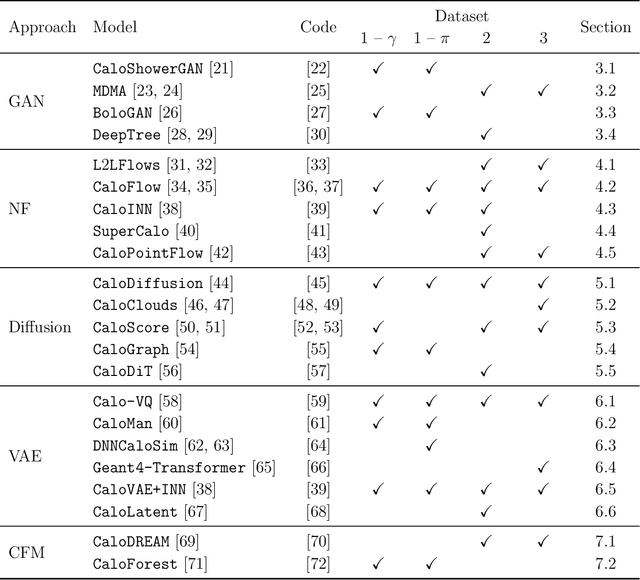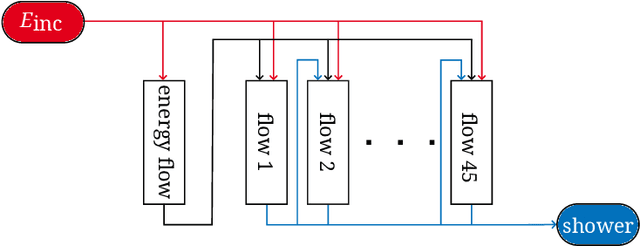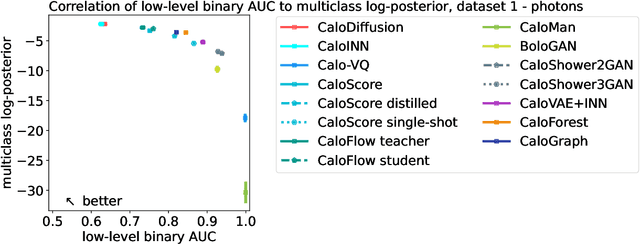Xiulong Liu
SAVVY: Spatial Awareness via Audio-Visual LLMs through Seeing and Hearing
Jun 04, 2025Abstract:3D spatial reasoning in dynamic, audio-visual environments is a cornerstone of human cognition yet remains largely unexplored by existing Audio-Visual Large Language Models (AV-LLMs) and benchmarks, which predominantly focus on static or 2D scenes. We introduce SAVVY-Bench, the first benchmark for 3D spatial reasoning in dynamic scenes with synchronized spatial audio. SAVVY-Bench is comprised of thousands of relationships involving static and moving objects, and requires fine-grained temporal grounding, consistent 3D localization, and multi-modal annotation. To tackle this challenge, we propose SAVVY, a novel training-free reasoning pipeline that consists of two stages: (i) Egocentric Spatial Tracks Estimation, which leverages AV-LLMs as well as other audio-visual methods to track the trajectories of key objects related to the query using both visual and spatial audio cues, and (ii) Dynamic Global Map Construction, which aggregates multi-modal queried object trajectories and converts them into a unified global dynamic map. Using the constructed map, a final QA answer is obtained through a coordinate transformation that aligns the global map with the queried viewpoint. Empirical evaluation demonstrates that SAVVY substantially enhances performance of state-of-the-art AV-LLMs, setting a new standard and stage for approaching dynamic 3D spatial reasoning in AV-LLMs.
Hearing Anywhere in Any Environment
Apr 14, 2025Abstract:In mixed reality applications, a realistic acoustic experience in spatial environments is as crucial as the visual experience for achieving true immersion. Despite recent advances in neural approaches for Room Impulse Response (RIR) estimation, most existing methods are limited to the single environment on which they are trained, lacking the ability to generalize to new rooms with different geometries and surface materials. We aim to develop a unified model capable of reconstructing the spatial acoustic experience of any environment with minimum additional measurements. To this end, we present xRIR, a framework for cross-room RIR prediction. The core of our generalizable approach lies in combining a geometric feature extractor, which captures spatial context from panorama depth images, with a RIR encoder that extracts detailed acoustic features from only a few reference RIR samples. To evaluate our method, we introduce ACOUSTICROOMS, a new dataset featuring high-fidelity simulation of over 300,000 RIRs from 260 rooms. Experiments show that our method strongly outperforms a series of baselines. Furthermore, we successfully perform sim-to-real transfer by evaluating our model on four real-world environments, demonstrating the generalizability of our approach and the realism of our dataset.
Enhance Generation Quality of Flow Matching V2A Model via Multi-Step CoT-Like Guidance and Combined Preference Optimization
Mar 28, 2025Abstract:Creating high-quality sound effects from videos and text prompts requires precise alignment between visual and audio domains, both semantically and temporally, along with step-by-step guidance for professional audio generation. However, current state-of-the-art video-guided audio generation models often fall short of producing high-quality audio for both general and specialized use cases. To address this challenge, we introduce a multi-stage, multi-modal, end-to-end generative framework with Chain-of-Thought-like (CoT-like) guidance learning, termed Chain-of-Perform (CoP). First, we employ a transformer-based network architecture designed to achieve CoP guidance, enabling the generation of both general and professional audio. Second, we implement a multi-stage training framework that follows step-by-step guidance to ensure the generation of high-quality sound effects. Third, we develop a CoP multi-modal dataset, guided by video, to support step-by-step sound effects generation. Evaluation results highlight the advantages of the proposed multi-stage CoP generative framework compared to the state-of-the-art models on a variety of datasets, with FAD 0.79 to 0.74 (+6.33%), CLIP 16.12 to 17.70 (+9.80%) on VGGSound, SI-SDR 1.98dB to 3.35dB (+69.19%), MOS 2.94 to 3.49(+18.71%) on PianoYT-2h, and SI-SDR 2.22dB to 3.21dB (+44.59%), MOS 3.07 to 3.42 (+11.40%) on Piano-10h.
Building Machine Learning Challenges for Anomaly Detection in Science
Mar 03, 2025Abstract:Scientific discoveries are often made by finding a pattern or object that was not predicted by the known rules of science. Oftentimes, these anomalous events or objects that do not conform to the norms are an indication that the rules of science governing the data are incomplete, and something new needs to be present to explain these unexpected outliers. The challenge of finding anomalies can be confounding since it requires codifying a complete knowledge of the known scientific behaviors and then projecting these known behaviors on the data to look for deviations. When utilizing machine learning, this presents a particular challenge since we require that the model not only understands scientific data perfectly but also recognizes when the data is inconsistent and out of the scope of its trained behavior. In this paper, we present three datasets aimed at developing machine learning-based anomaly detection for disparate scientific domains covering astrophysics, genomics, and polar science. We present the different datasets along with a scheme to make machine learning challenges around the three datasets findable, accessible, interoperable, and reusable (FAIR). Furthermore, we present an approach that generalizes to future machine learning challenges, enabling the possibility of large, more compute-intensive challenges that can ultimately lead to scientific discovery.
Tell What You Hear From What You See -- Video to Audio Generation Through Text
Nov 08, 2024



Abstract:The content of visual and audio scenes is multi-faceted such that a video can be paired with various audio and vice-versa. Thereby, in video-to-audio generation task, it is imperative to introduce steering approaches for controlling the generated audio. While Video-to-Audio generation is a well-established generative task, existing methods lack such controllability. In this work, we propose VATT, a multi-modal generative framework that takes a video and an optional text prompt as input, and generates audio and optional textual description of the audio. Such a framework has two advantages: i) Video-to-Audio generation process can be refined and controlled via text which complements the context of visual information, and ii) The model can suggest what audio to generate for the video by generating audio captions. VATT consists of two key modules: VATT Converter, a LLM that is fine-tuned for instructions and includes a projection layer that maps video features to the LLM vector space; and VATT Audio, a transformer that generates audio tokens from visual frames and from optional text prompt using iterative parallel decoding. The audio tokens are converted to a waveform by pretrained neural codec. Experiments show that when VATT is compared to existing video-to-audio generation methods in objective metrics, it achieves competitive performance when the audio caption is not provided. When the audio caption is provided as a prompt, VATT achieves even more refined performance (lowest KLD score of 1.41). Furthermore, subjective studies show that VATT Audio has been chosen as preferred generated audio than audio generated by existing methods. VATT enables controllable video-to-audio generation through text as well as suggesting text prompts for videos through audio captions, unlocking novel applications such as text-guided video-to-audio generation and video-to-audio captioning.
CaloChallenge 2022: A Community Challenge for Fast Calorimeter Simulation
Oct 28, 2024



Abstract:We present the results of the "Fast Calorimeter Simulation Challenge 2022" - the CaloChallenge. We study state-of-the-art generative models on four calorimeter shower datasets of increasing dimensionality, ranging from a few hundred voxels to a few tens of thousand voxels. The 31 individual submissions span a wide range of current popular generative architectures, including Variational AutoEncoders (VAEs), Generative Adversarial Networks (GANs), Normalizing Flows, Diffusion models, and models based on Conditional Flow Matching. We compare all submissions in terms of quality of generated calorimeter showers, as well as shower generation time and model size. To assess the quality we use a broad range of different metrics including differences in 1-dimensional histograms of observables, KPD/FPD scores, AUCs of binary classifiers, and the log-posterior of a multiclass classifier. The results of the CaloChallenge provide the most complete and comprehensive survey of cutting-edge approaches to calorimeter fast simulation to date. In addition, our work provides a uniquely detailed perspective on the important problem of how to evaluate generative models. As such, the results presented here should be applicable for other domains that use generative AI and require fast and faithful generation of samples in a large phase space.
From Vision to Audio and Beyond: A Unified Model for Audio-Visual Representation and Generation
Sep 27, 2024Abstract:Video encompasses both visual and auditory data, creating a perceptually rich experience where these two modalities complement each other. As such, videos are a valuable type of media for the investigation of the interplay between audio and visual elements. Previous studies of audio-visual modalities primarily focused on either audio-visual representation learning or generative modeling of a modality conditioned on the other, creating a disconnect between these two branches. A unified framework that learns representation and generates modalities has not been developed yet. In this work, we introduce a novel framework called Vision to Audio and Beyond (VAB) to bridge the gap between audio-visual representation learning and vision-to-audio generation. The key approach of VAB is that rather than working with raw video frames and audio data, VAB performs representation learning and generative modeling within latent spaces. In particular, VAB uses a pre-trained audio tokenizer and an image encoder to obtain audio tokens and visual features, respectively. It then performs the pre-training task of visual-conditioned masked audio token prediction. This training strategy enables the model to engage in contextual learning and simultaneous video-to-audio generation. After the pre-training phase, VAB employs the iterative-decoding approach to rapidly generate audio tokens conditioned on visual features. Since VAB is a unified model, its backbone can be fine-tuned for various audio-visual downstream tasks. Our experiments showcase the efficiency of VAB in producing high-quality audio from video, and its capability to acquire semantic audio-visual features, leading to competitive results in audio-visual retrieval and classification.
Calo-VQ: Vector-Quantized Two-Stage Generative Model in Calorimeter Simulation
May 10, 2024Abstract:We introduce a novel machine learning method developed for the fast simulation of calorimeter detector response, adapting vector-quantized variational autoencoder (VQ-VAE). Our model adopts a two-stage generation strategy: initially compressing geometry-aware calorimeter data into a discrete latent space, followed by the application of a sequence model to learn and generate the latent tokens. Extensive experimentation on the Calo-challenge dataset underscores the efficiency of our approach, showcasing a remarkable improvement in the generation speed compared with conventional method by a factor of 2000. Remarkably, our model achieves the generation of calorimeter showers within milliseconds. Furthermore, comprehensive quantitative evaluations across various metrics are performed to validate physics performance of generation.
MuseChat: A Conversational Music Recommendation System for Videos
Oct 11, 2023



Abstract:We introduce MuseChat, an innovative dialog-based music recommendation system. This unique platform not only offers interactive user engagement but also suggests music tailored for input videos, so that users can refine and personalize their music selections. In contrast, previous systems predominantly emphasized content compatibility, often overlooking the nuances of users' individual preferences. For example, all the datasets only provide basic music-video pairings or such pairings with textual music descriptions. To address this gap, our research offers three contributions. First, we devise a conversation-synthesis method that simulates a two-turn interaction between a user and a recommendation system, which leverages pre-trained music tags and artist information. In this interaction, users submit a video to the system, which then suggests a suitable music piece with a rationale. Afterwards, users communicate their musical preferences, and the system presents a refined music recommendation with reasoning. Second, we introduce a multi-modal recommendation engine that matches music either by aligning it with visual cues from the video or by harmonizing visual information, feedback from previously recommended music, and the user's textual input. Third, we bridge music representations and textual data with a Large Language Model(Vicuna-7B). This alignment equips MuseChat to deliver music recommendations and their underlying reasoning in a manner resembling human communication. Our evaluations show that MuseChat surpasses existing state-of-the-art models in music retrieval tasks and pioneers the integration of the recommendation process within a natural language framework.
Tackling Data Bias in MUSIC-AVQA: Crafting a Balanced Dataset for Unbiased Question-Answering
Oct 10, 2023Abstract:In recent years, there has been a growing emphasis on the intersection of audio, vision, and text modalities, driving forward the advancements in multimodal research. However, strong bias that exists in any modality can lead to the model neglecting the others. Consequently, the model's ability to effectively reason across these diverse modalities is compromised, impeding further advancement. In this paper, we meticulously review each question type from the original dataset, selecting those with pronounced answer biases. To counter these biases, we gather complementary videos and questions, ensuring that no answers have outstanding skewed distribution. In particular, for binary questions, we strive to ensure that both answers are almost uniformly spread within each question category. As a result, we construct a new dataset, named MUSIC-AVQA v2.0, which is more challenging and we believe could better foster the progress of AVQA task. Furthermore, we present a novel baseline model that delves deeper into the audio-visual-text interrelation. On MUSIC-AVQA v2.0, this model surpasses all the existing benchmarks, improving accuracy by 2% on MUSIC-AVQA v2.0, setting a new state-of-the-art performance.
 Add to Chrome
Add to Chrome Add to Firefox
Add to Firefox Add to Edge
Add to Edge